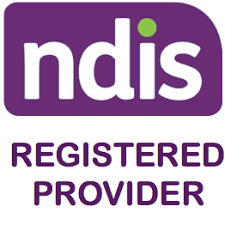Apps
Definition of Deaf Blindness
Deaf blindness refers to the combination of hearing and visual loss that severely impedes communication, education, socialisation, mobility, employment and independent living.
Types of Deaf Blindness
- Congenitally deaf blind is a term used when a person is born with a combined sight and hearing impairment.
- Congenitally deaf and adventitiously blind is a term used when a person who is born deaf or has a hearing impairment later experiences deteriorating vision.
- Congenitally blind and adventitiously deaf is a term used when a person is born blind or has a vision impairment later experiences deteriorating hearing.
- Adventitiously deafblind is a term used when a person is born with vision and hearing and later experiences deterioration in both senses (not necessarily at the same time).
Causes of Deaf Blindness
There are a range of genetic conditions, disorders and illness that cause deaf blindness:
- Congenitally deaf blind (e.g. Maternal Rubella, CHARGE, Cytomegalovirus).
- Congenitally deaf and adventitiously blind (e.g. Usher Syndrome Type 1, Cataracts, Glaucoma, Age-related Maculopathy).
- Congenitally blind and adventitiously deaf (e.g. Diseases: Meningitis; Mumps; chemical toxins including drugs and alcohol and age related hearing loss).
- Adventitiously deafblind (e.g. trauma, illness, aging, Usher Syndrome Types 2 and 3).
Symptoms of Deaf Blindness
Symptoms vary due to differences in extent, type and sensory impairments; personal characteristics and skills developed, including interests (Hersh, 2013).
Possible Signs of a Hearing Impairment:
- Lack of, or delayed development of, speech and language.
- Not responding when addressed.
- Difficulty with following directions or instructions.
- Seeming distracted and/or confused.
- Turning head to position ear in the direction of the speaker.
- Favouring one ear over another.
- Using a loud voice when speaking.
- Mispronouncing words (such as misarticulation of certain speech sounds or omitting certain consonant sounds).
- Asking for information to be repeated frequently.
- Appearing to be inattentive, restless, tired or daydreaming.
- Distracted easily by visual or auditory stimuli.
- Intently watching faces during conversation.
- Giving incorrect answers to questions.
- Not startled by loud noises.
- Preferring to be by themselves (i.e., playing alone rather than with a group, or withdrawing from social situations).
- Problems hearing environmental sounds (i.e. doorbell, telephone ringing, people calling).
- Sitting close to the sound source (e.g. TV, radio, and/or turning up the volume).
Possible Signs of a Vision impairment:
- Rubbing eyes during or after short periods of visual activity.
- Bumping or tripping into things regularly.
- Difficulty moving around unfamiliar places.
- Difficulty coping and seeing in low light or bright light.
- Holds book too closely; face too close to desk surface or sitting up close near technology.
- Problems seeing in low light or bright light.
- Difficulty identifying faces, facial expressions or making eye contact.
- Trouble with identifying colours.
- Relying primarily on touch to find and identify items.
References
Behaviour Help
If you are supporting an individual with this diagnosis, please refer to our services and resources. They aim to help children, adolescents and adults achieve better communication, social, emotional, behavioural and learning outcomes. So whether you are wanting guidance on parenting, teaching, supporting or providing therapy, Behaviour Help is at hand.
Note: This is not an exhaustive list of all the possible causes, symptoms and types but some general information that can be further explored. Based on what you have read if you have any concerns about an individual, please raise them with the individual/s. The caregiver can then raise these concerns with their local doctor who can provide a referral to the relevant professional (e.g. paediatrician, psychologist, psychiatrist, allied health professional and learning specialists) for diagnosis and treatment if appropriate.
Get Started with Behaviour Help App
Assess-manage-prevent behaviours of concern efficiently and effectively with the Behaviour Help App.

